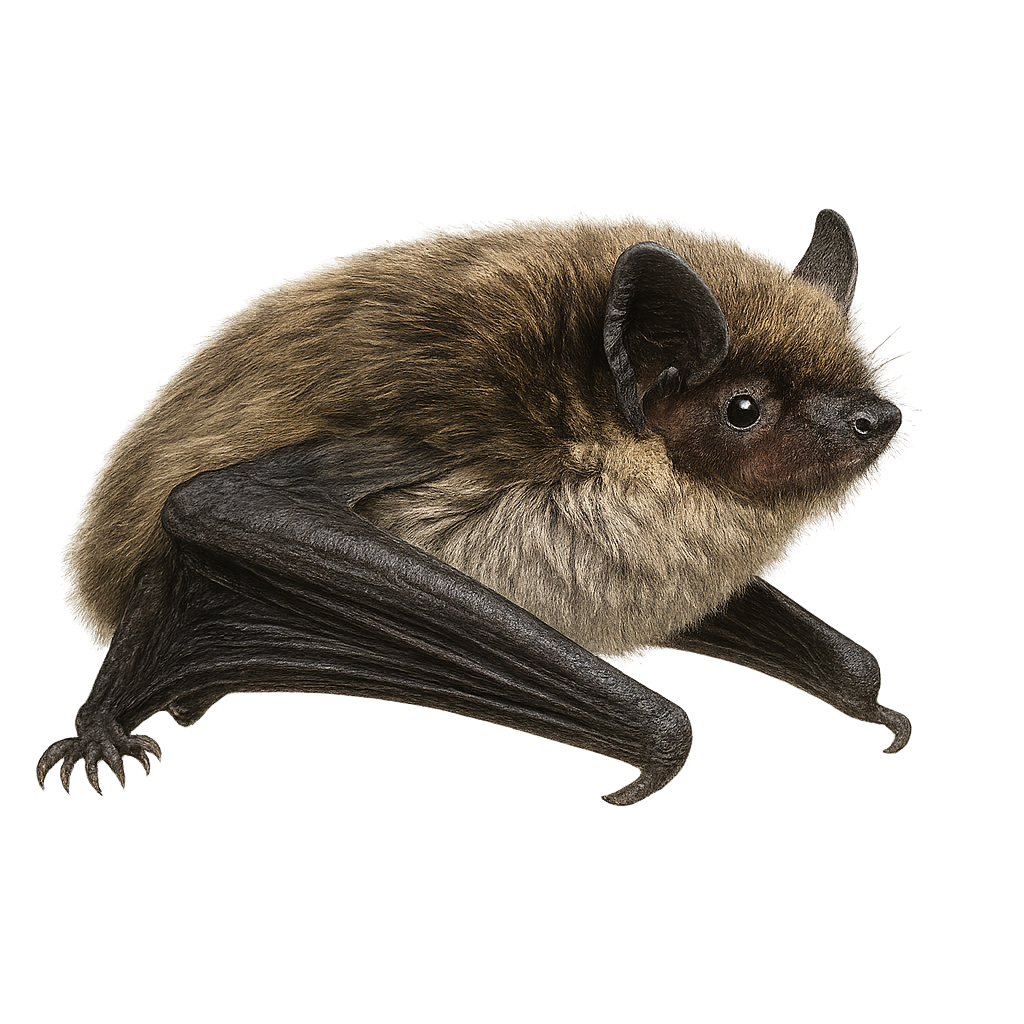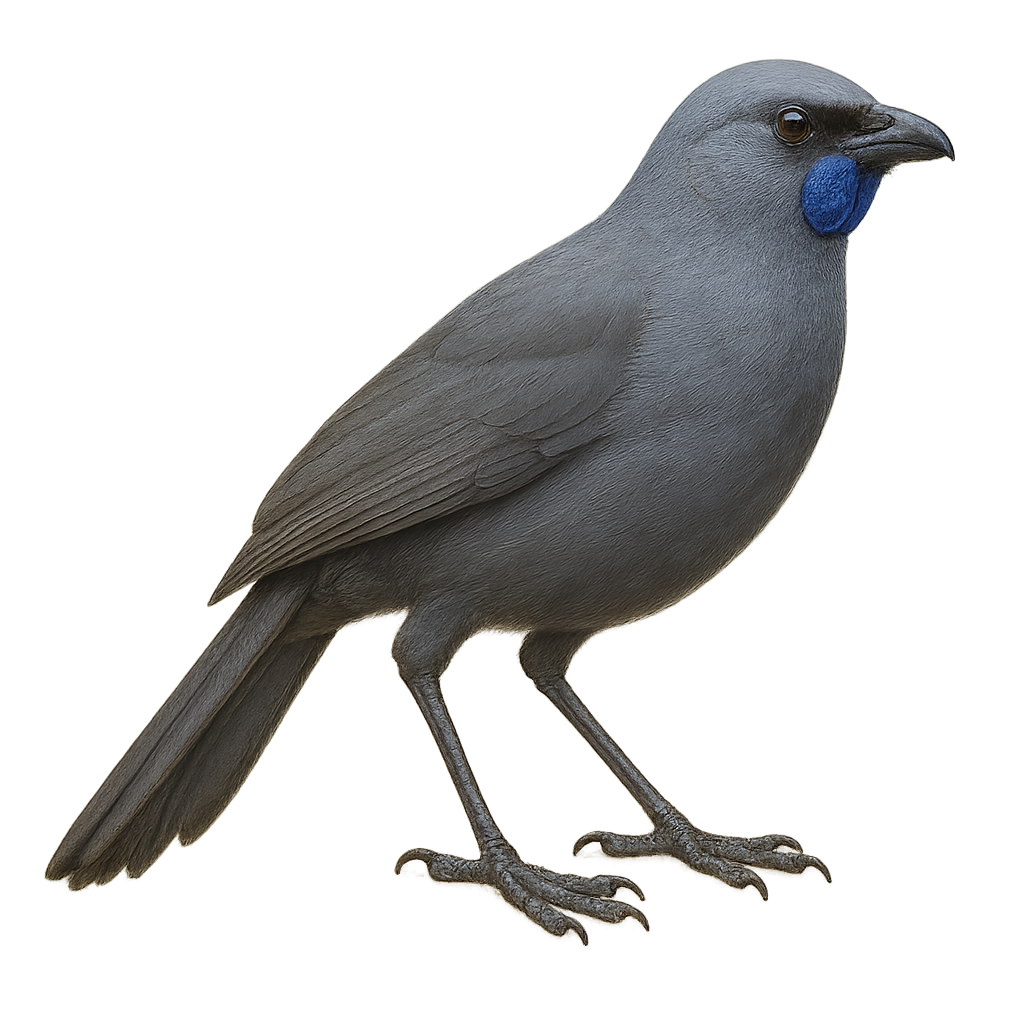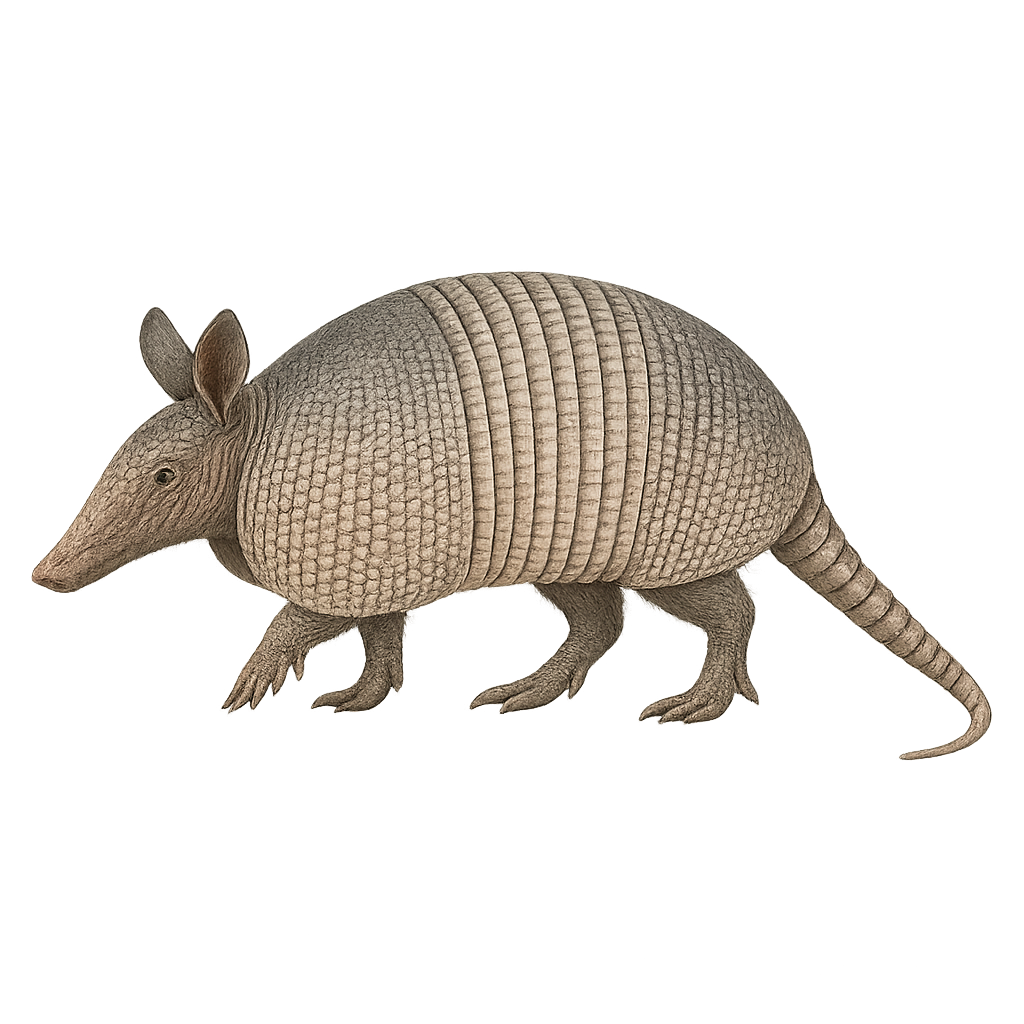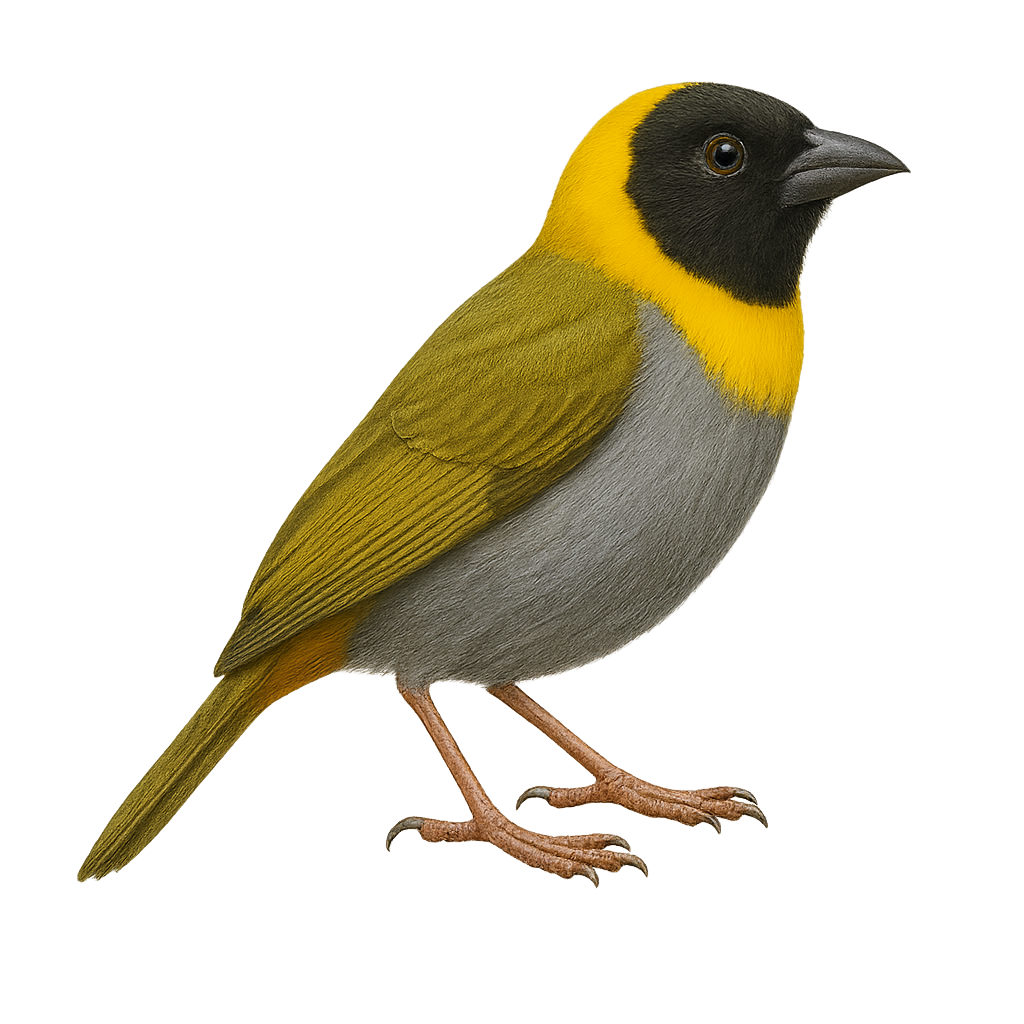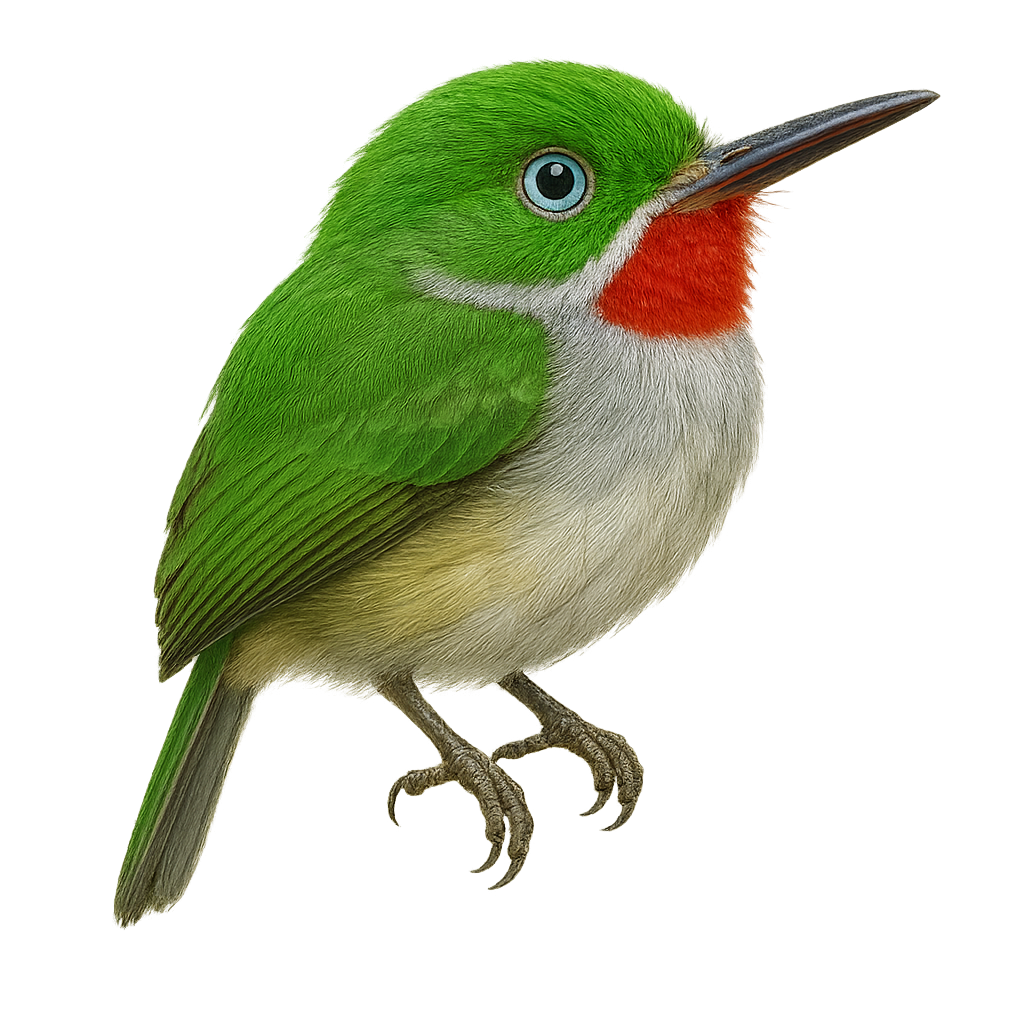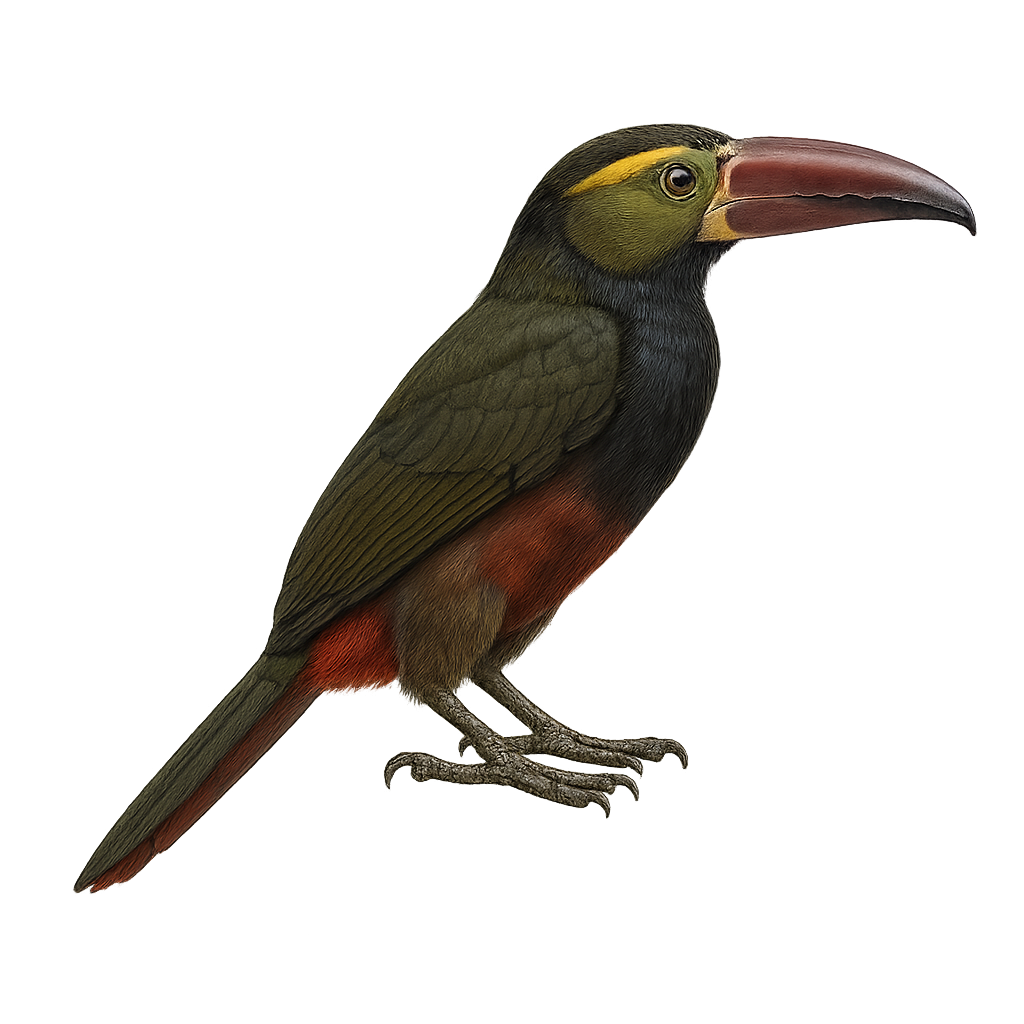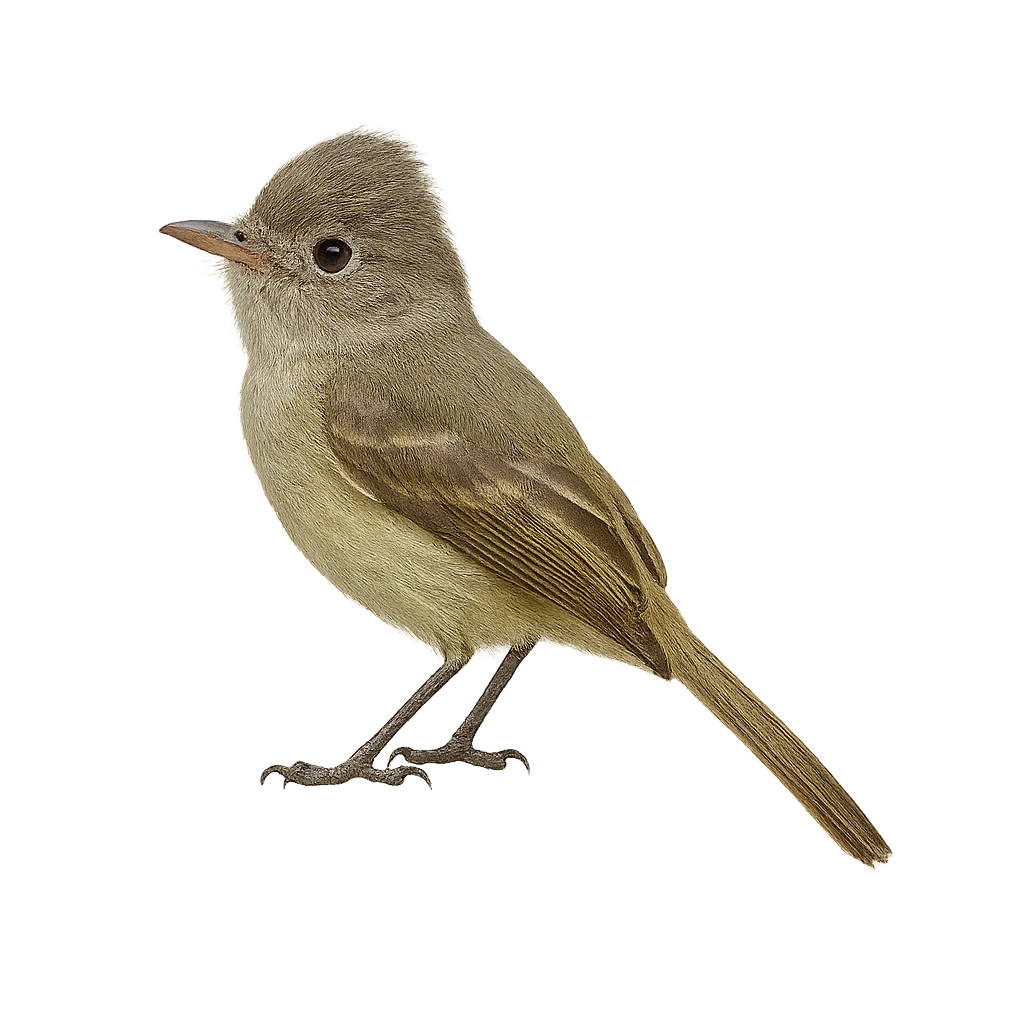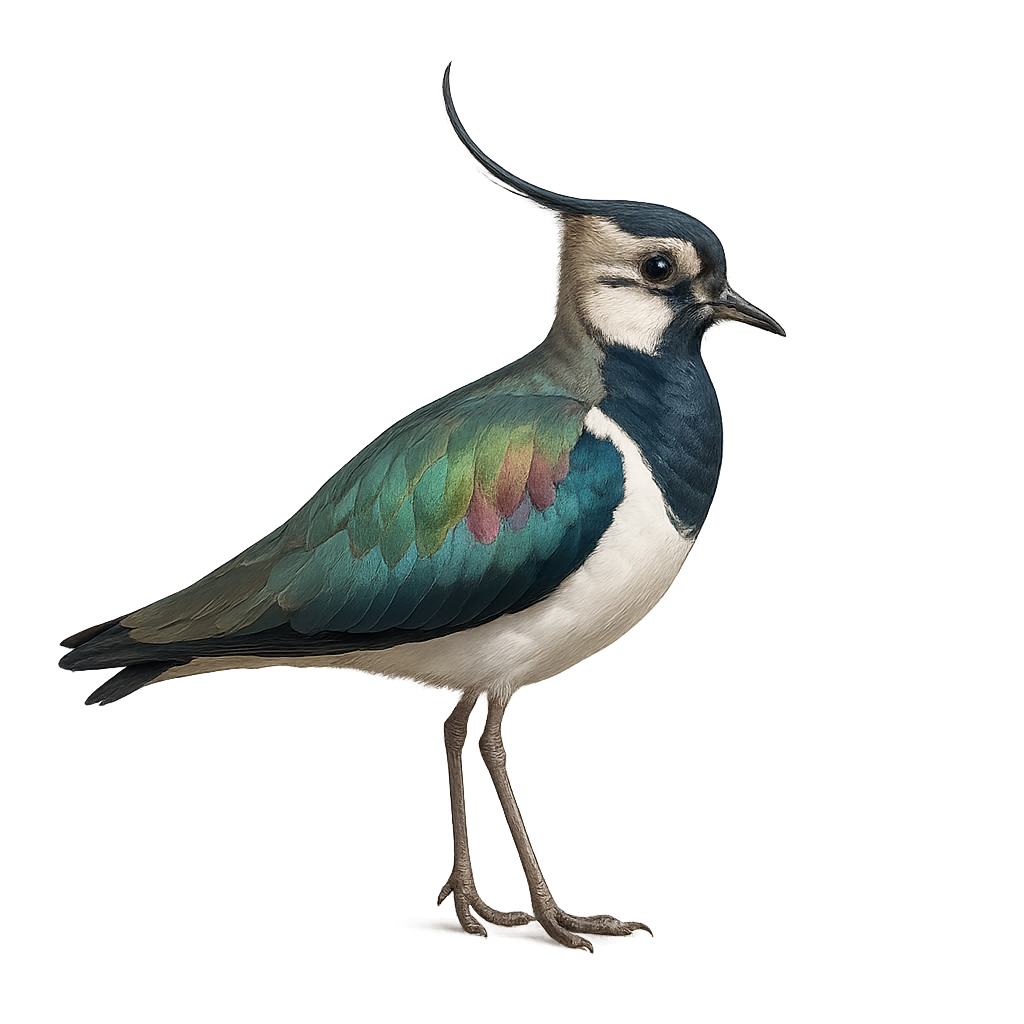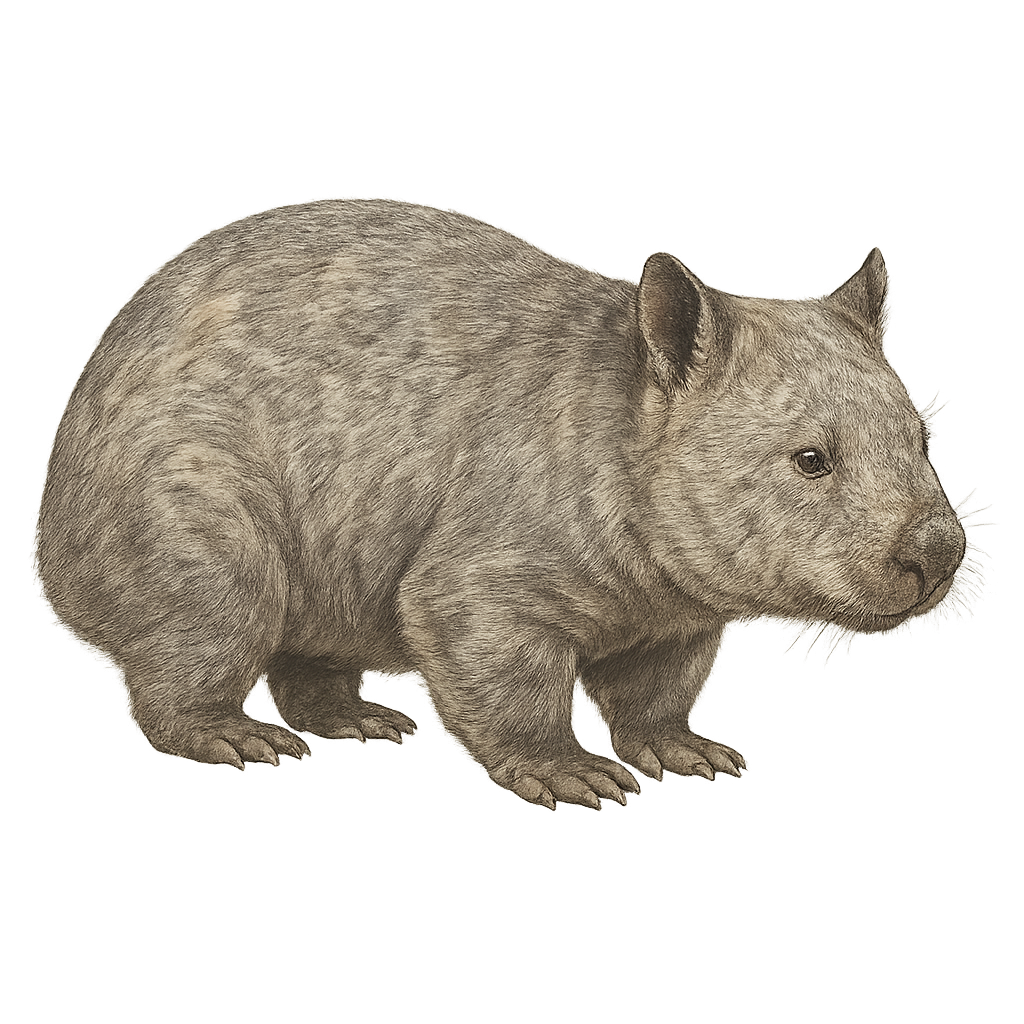The Northern Bat, Eptesicus nilssonii, is a medium-sized bat found in northern Europe and Asia. It is characterized by its dark brown fur, which is often lighter on the belly, and relatively short ears. It primarily inhabits coniferous forests but can also be found in urban areas, using buildings for roosting. This nocturnal species feeds on insects, which it catches in flight using sophisticated echolocation. It is mainly active during summer nights, while it hibernates in winter in caves or abandoned buildings. Although its conservation status is currently considered "least concern," it remains sensitive to human disturbances and the loss of its natural habitat.
The Callaeas wilsoni, commonly known as the North Island Kōkako, is an endemic bird of New Zealand. It is easily recognizable by its bluish-grey plumage and bright blue facial wattles. This forest bird is known for its melodious and complex song, often compared to a flute. It primarily inhabits the wet and dense forests of the North Island, where it feeds on fruits, insects, and leaves. Although its flight is weak, it is an excellent climber, using its strong legs to move between branches. Unfortunately, the North Island Kōkako is threatened by habitat loss and predation by introduced species, leading to a significant decline in its population.
The Mexican Tamandua, or Tamandua mexicana, is an insectivorous mammal primarily found in the tropical and subtropical forests of Mexico, Guatemala, and Honduras. It typically measures between 50 and 70 cm in length, with a tail of 40 to 50 cm, and weighs between 4 and 7 kg. Its fur is generally yellow-brown, with a black mask around the eyes and a wide black band on its back. This tamandua has a long tongue, which can reach up to 40 cm, used to catch termites and ants, its main food source. The Mexican Tamandua is also an excellent climber, spending much of its time in trees. It is generally nocturnal and primarily feeds on insects and occasionally fruits. While its population remains relatively stable, it is sometimes threatened by deforestation and the loss of its natural habitat.
The nine-banded armadillo, Dasypus novemcinctus, is a distinctive armored mammal native to the Americas. It is easily recognized by its hard shell made of bony plates and its nine movable bands that provide some flexibility. This armadillo typically measures between 40 and 60 cm in length, not including its tail, which can add an additional 25 to 40 cm. It weighs between 3 and 6 kg. Primarily nocturnal, it feeds on insects, small invertebrates, and occasionally fruits. It can dig quickly to escape predators or find food. Although often solitary, it can be seen in small groups during the breeding season.
The Nelicourvi Weaver is an endemic bird of Madagascar, recognizable by its bright yellow plumage and distinctive black patterns on its head and back. It primarily inhabits the island's humid forests and wooded areas. This bird is known for its complex nests, often suspended from tree branches. The male builds the nest to attract a female, and if unsuccessful, he destroys it to build another. The Nelicourvi Weaver is a sociable bird, often seen in small groups. It primarily feeds on insects and seeds. Although its habitat is threatened by deforestation, it is currently classified as "least concern" by the IUCN.
The Narrow-billed Tody, or Todus angustirostris, is a small, colorful bird endemic to the island of Hispaniola, shared by Haiti and the Dominican Republic. It is distinguished by its bright green plumage, vivid red throat, and pale yellow belly. Measuring about 11 cm in length, it has a thin, slightly curved beak, adapted to its diet mainly consisting of insects. This tody is often seen in humid forests and wooded areas, where it moves nimbly in search of food. Although it is relatively tolerant, it remains discreet and blends easily into its environment thanks to its plumage.
The Natterer's Toucanet, or Selenidera nattereri, is a colorful and fascinating bird primarily inhabiting the humid tropical forests of South America. This small toucan is distinguished by its vibrant plumage, a mix of green, blue, and yellow, with a distinctive and colorful beak. It is often seen in pairs or small groups, feeding mainly on fruits, but also on insects and small vertebrates. Its song is a mix of high-pitched calls and melodious whistles that resonate through the dense canopy. Although its habitat is threatened by deforestation, the Natterer's Toucanet remains relatively common in some areas due to its adaptability.
The Northern Beardless Tyrannulet is a small bird from the Tyrannidae family, found mainly in arid and semi-arid regions from the southwestern United States to northern Mexico. It is characterized by its modest size, gray-olive plumage, and lack of a beard, hence its name. This passerine is often seen in low bushes and trees, where it primarily feeds on insects. Its song is a soft, repetitive trill, often heard before the bird is seen. Although discreet, it is quite tolerant of human presence, making it easier to observe.
The Northern Lapwing is a medium-sized bird found primarily in grasslands, fields, and wetlands across Europe, Western Asia, and the Middle East. It typically measures about 28 to 32 cm in length and weighs between 150 and 200 g. Its plumage is primarily black and white, with a distinctive crest on its head and a white belly. The Northern Lapwing is a ground-dwelling bird that primarily feeds on insects, worms, and other small invertebrates found in the soil. It is also known for its ground nesting behaviors, often in colonies. While its population remains stable in some areas, the Northern Lapwing is threatened by habitat loss due to intensive agriculture and land degradation.
The Nile Monitor is a large reptile species native to Africa, particularly found in sub-Saharan regions. It is easily recognized by its impressive size, long and powerful body, and smooth scales. This monitor is semi-aquatic and is commonly found near rivers, lakes, and swamps, where it feeds on fish, amphibians, birds, and even small mammals. Highly agile, it is also capable of swimming and climbing with ease. The Nile Monitor is known for its territorial nature and sometimes aggressive behaviors, especially during the breeding season.
The Northern Hairy-nosed Wombat, or Lasiorhinus krefftii, is a rare and critically endangered marsupial native to Australia. This robust mammal is characterized by its hairy nose and dense, silky fur. It primarily inhabits grassy areas and open forests. Northern Hairy-nosed Wombats are expert burrowers, digging extensive burrows to protect themselves from predators and extreme weather conditions. They are mainly nocturnal, feeding on grasses and roots. Their population is extremely limited, with only a few dozen individuals remaining, making them one of the most endangered species in the world. Conservation of their habitat is crucial for their survival.


